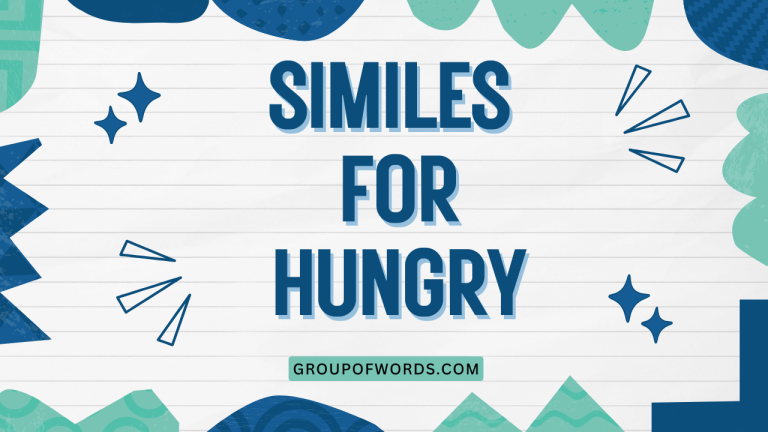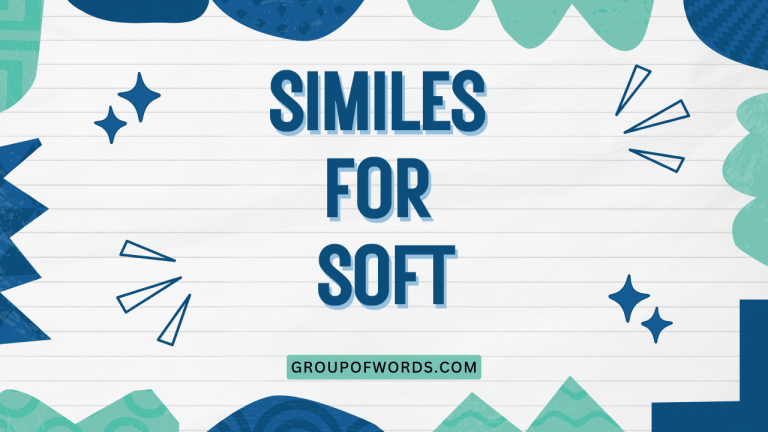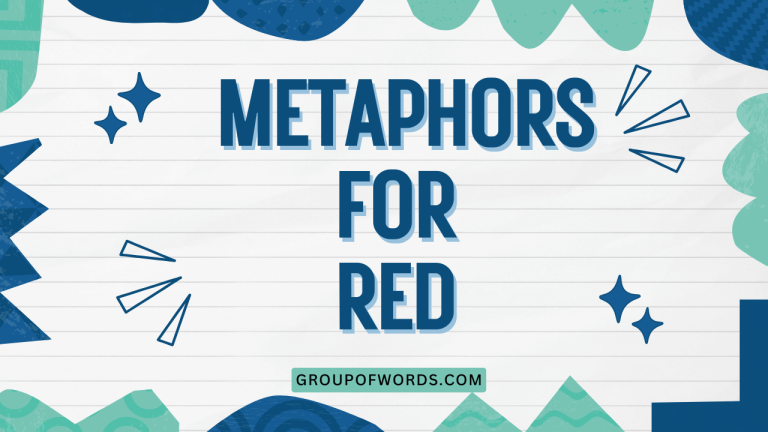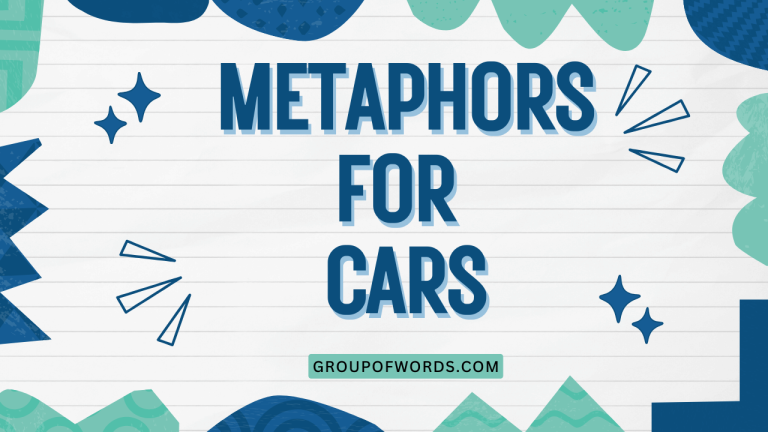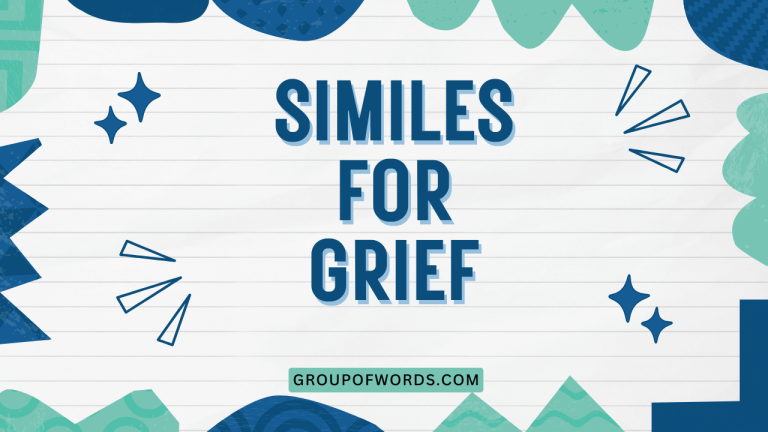Hands as Metaphors: A Comprehensive Guide
Metaphors are powerful tools in the English language, allowing us to understand abstract concepts by relating them to more concrete ones. One of the most commonly used and versatile metaphorical subjects is the human hand.
From grasping ideas to lending a helping hand, the hand serves as a rich source of imagery and figurative language. Understanding how hands are used metaphorically can significantly enhance your comprehension of literature, improve your writing skills, and deepen your appreciation for the nuances of the English language.
This article provides a comprehensive exploration of metaphors for hands, covering their various forms, meanings, usage, and common pitfalls. Whether you are a student, a writer, or simply an English language enthusiast, this guide will equip you with the knowledge and skills to effectively recognize and utilize hand metaphors in your own communication.
This article will benefit students studying literature, creative writing, and English as a second language. It will also be useful for anyone looking to improve their understanding and use of figurative language in both formal and informal contexts.
By the end of this guide, you will have a firm grasp on the diverse ways in which hands are used metaphorically and how these metaphors can enrich your understanding and expression.
Table of Contents
- Definition of Metaphors for Hands
- Structural Breakdown of Hand Metaphors
- Types and Categories of Hand Metaphors
- Examples of Hand Metaphors
- Usage Rules for Hand Metaphors
- Common Mistakes with Hand Metaphors
- Practice Exercises
- Advanced Topics: Extended Hand Metaphors and Symbolism
- Frequently Asked Questions
- Conclusion
Definition of Metaphors for Hands
A metaphor is a figure of speech that directly compares two unlike things without using “like” or “as.” Metaphors for hands use the physical attributes and actions associated with hands to represent abstract ideas, emotions, or concepts. These metaphors leverage our understanding of what hands do – grasp, hold, build, create, touch, etc. – to convey deeper meanings.
The effectiveness of a hand metaphor lies in its ability to create a vivid and relatable image in the reader’s mind.
In essence, metaphors for hands transfer the qualities and actions of hands to something else, creating a symbolic representation. For instance, saying someone “has a firm hand” in a negotiation doesn’t literally mean they are physically holding something tightly.
Instead, it implies they are in control and handling the situation with authority. The context in which the metaphor is used is crucial for understanding its intended meaning.
The hand, being such a versatile and expressive part of the body, lends itself well to a wide range of metaphorical applications.
Structural Breakdown of Hand Metaphors
The structure of hand metaphors typically involves a subject (the abstract concept being described) and a vehicle (the hand-related term or action used to represent it). The subject and vehicle are connected through an implied similarity or association.
Understanding this structure helps in both interpreting and creating effective metaphors.
Consider the metaphor “His hands were tied.” Here, the subject is someone’s inability to act freely, and the vehicle is the image of tied hands, which literally restrict movement. The unspoken connection is the feeling of being constrained or powerless.
The structure can be further broken down into the following components:
- Subject: The abstract concept or idea being described (e.g., inability to act, control, support).
- Vehicle: The hand-related term or action used to represent the subject (e.g., tied hands, helping hand, guiding hand).
- Ground: The shared qualities or associations between the subject and the vehicle (e.g., restriction, assistance, direction).
- Tenor: The aspect of the subject to which the metaphor applies.
By analyzing these components, we can gain a deeper understanding of how hand metaphors function and how they contribute to the overall meaning of a text.
Types and Categories of Hand Metaphors
Hand metaphors can be categorized based on the type of concept they represent. These categories help to classify and understand the different ways hands are used metaphorically.
Hands as Instruments of Action
These metaphors focus on the physical actions hands perform, such as grasping, holding, building, or destroying. They often convey a sense of agency, activity, or manipulation.
Examples include: “He had a hand in the project” (involvement), “She laid her hands on the prize” (achieving something), or “They joined hands to form a human chain” (collaboration).
Hands Expressing Emotions
Hands can also be used to express emotions, such as anger, fear, or comfort. These metaphors rely on the association between physical touch and emotional states.
Examples include: “Her hands trembled with fear” (anxiety), “He wrung his hands in despair” (worry), or “She held his hand for comfort” (support).
Hands Representing Control and Power
These metaphors use hands to symbolize authority, dominance, or the ability to influence situations or people. They often involve actions like guiding, wielding, or restraining.
Examples include: “He had a firm hand in managing the company” (control), “The government’s heavy-handed policies” (oppression), or “She held the situation in the palm of her hand” (complete control).
Hands as Symbols of Support and Help
Perhaps one of the most common uses, these metaphors portray hands as instruments of assistance, guidance, or protection. They often evoke a sense of compassion and care.
Examples include: “Lend a helping hand” (assistance), “He gave her a hand up” (support), or “Under the guiding hand of a mentor” (guidance).
Hands Representing Skill and Craft
These metaphors highlight the dexterity, precision, and creativity associated with skilled hands. They are often used in the context of art, craftsmanship, or expertise.
Examples include: “A steady hand” (skill), “The artist’s skilled hands” (talent), or “His hands crafted a masterpiece” (creation).
Hands as Symbols of Connection
These metaphors use hands to represent unity, agreement, or emotional bonds. They often involve actions like shaking hands or holding hands.
Examples include: “Shake on it” (agreement), “Holding hands in solidarity” (unity), or “The bonds forged by helping hands” (friendship).
Examples of Hand Metaphors
This section provides extensive examples of hand metaphors, categorized by the types discussed above. Each example is accompanied by a brief explanation of its meaning and usage.
The following tables present examples, categorized by the type of hand metaphor.
Table 1: Action Metaphors
This table showcases hand metaphors where the emphasis is on the action that the hands perform, highlighting the impact and involvement associated with those actions.
| Metaphor | Meaning |
|---|---|
| He had a hand in the cookie jar | He was involved in taking the cookies. |
| She laid her hands on the prize. | She successfully obtained the prize. |
| They joined hands to form a circle. | They collaborated to create a sense of unity. |
| The scandal has touched many hands. | Many people have been involved in the scandal. |
| He washed his hands of the situation. | He disclaimed responsibility for the situation. |
| She played her hand well in the negotiation. | She skillfully managed her strategy in the negotiation. |
| The project fell into the wrong hands. | The project was taken over by someone incompetent or malevolent. |
| He got his hands dirty in the deal. | He engaged in unethical or illegal activities. |
| They had a heavy hand in the decision-making process. | They exerted excessive influence on the decisions. |
| She tried to keep her hands clean. | She attempted to avoid involvement in wrongdoing. |
| He has a hand in every pie. | He’s involved in many different projects or activities. |
| The evidence fell into the hands of the police. | The police acquired possession of the evidence. |
| She took matters into her own hands. | She decided to handle the situation herself. |
| He showed his hand too early. | He revealed his intentions prematurely. |
| They are working hand in glove with each other. | They are working closely and secretly together. |
| He is always ready to lend a hand. | He is always willing to offer assistance. |
| The idea passed from hand to hand. | The idea was shared or circulated among many people. |
| He had a hand in the company’s downfall. | He contributed to the company’s failure. |
| She has her hands full with the children. | She is very busy and occupied with caring for the children. |
| He is playing into their hands. | He is acting in a way that benefits his opponents. |
| He’s got the situation in hand. | He’s got the situation under control. |
Table 2: Emotional Metaphors
This table presents examples of hand metaphors that express various emotions, highlighting the connection between physical actions and inner feelings.
| Metaphor | Meaning |
|---|---|
| Her hands trembled with fear. | She was very afraid. |
| He wrung his hands in despair. | He was extremely worried and helpless. |
| She held his hand for comfort. | She provided him with emotional support. |
| His hands were clammy with nervousness. | He was anxious and apprehensive. |
| She reached out a hand in friendship. | She offered a gesture of goodwill. |
| His heart was in his hands. | He was in a very risky or vulnerable situation. |
| She clutched at straws. | She was desperately seeking help. |
| He extended a hand of forgiveness. | He offered reconciliation and pardon. |
| Her hands flew to her mouth in shock. | She was extremely surprised and taken aback. |
| He offered a hand of sympathy. | He expressed his condolences and support. |
| She kept him at arm’s length. | She maintained emotional distance from him. |
| His hands balled into fists in anger. | He was furious and ready to fight. |
| She gave him the cold shoulder. | She ignored him and treated him unkindly. |
| He reached out a helping hand. | He offered assistance and support. |
| She couldn’t keep her hands off him. | She was very attracted to him and wanted to touch him. |
| He felt a heavy hand on his shoulder. | He felt a sense of pressure or responsibility. |
| She held her head in her hands. | She was feeling overwhelmed or distressed. |
| He gave her a gentle hand squeeze. | He offered reassurance and affection. |
| She brushed off his hand. | She rejected his touch or gesture of affection. |
| He wore his heart on his sleeve. | He openly showed his emotions. |
| She offered her hand in marriage. | She proposed marriage. |
Table 3: Control and Power Metaphors
This table provides examples of hand metaphors that represent control, power, and authority, often indicating influence or dominance.
| Metaphor | Meaning |
|---|---|
| He had a firm hand in managing the company. | He exercised strong control over the company’s operations. |
| The government’s heavy-handed policies. | The government’s policies were oppressive and authoritarian. |
| She held the situation in the palm of her hand. | She had complete control over the situation. |
| He twisted her arm to get her to agree. | He pressured her into agreeing. |
| The decision was out of his hands. | He had no control over the decision. |
| He ruled with an iron fist. | He governed harshly and ruthlessly. |
| She has a tight grip on the finances. | She maintains strict control over the financial matters. |
| The future is in our hands. | We have the power to shape the future. |
| He had a hand in all major decisions. | He influenced all significant decisions. |
| She is the power behind the throne. | She exerts significant influence behind the scenes. |
| He has the upper hand in the negotiation. | He has an advantage in the negotiation. |
| She has a grip on reality. | She is well-grounded and understands the true nature of things. |
| He had his finger on the pulse of the market. | He had a keen understanding of market trends. |
| She is pulling the strings behind the scenes. | She is secretly controlling the situation. |
| He has a strong hold on the market. | He dominates the market. |
| She keeps her cards close to her chest. | She keeps her plans and intentions secret. |
| He has the whip hand. | He has the power and authority. |
| She is a force to be reckoned with. | She is a powerful and influential person. |
| He has a command of the situation. | He has control over the situation. |
| She is steering the ship. | She is guiding the organization. |
Table 4: Support and Help Metaphors
This table presents examples of hand metaphors that symbolize assistance, guidance, and protection, highlighting the supportive role of hands.
| Metaphor | Meaning |
|---|---|
| Lend a helping hand. | Offer assistance. |
| He gave her a hand up. | He provided support. |
| Under the guiding hand of a mentor. | With the guidance of a mentor. |
| He reached out a hand to help. | He offered assistance. |
| She held his hand through the crisis. | She supported him during a difficult time. |
| He offered a steady hand. | He provided reliable support. |
| She gave him a leg up. | She helped him advance. |
| He extended a hand of friendship. | He offered goodwill. |
| She gave him a helping hand with his work. | She assisted him with his tasks. |
| He gave her a hand with the luggage. | He helped her carry the luggage. |
| She is always ready to lend a hand to those in need. | She is always willing to help people who need assistance. |
| He gave her a hand in starting her business. | He supported her in launching her business. |
| She gave him a hand in completing the project. | She assisted him in finishing the project. |
| He offered a hand of encouragement. | He provided support and motivation. |
| She held his hand during the surgery. | She provided emotional support during the medical procedure. |
| He gave her a hand in moving furniture. | He assisted her in relocating the furniture. |
| She is always there to lend a hand. | She is always available to provide assistance. |
| He gave her a hand in cooking dinner. | He helped her prepare the meal. |
| She offered a hand of comfort to those grieving. | She provided solace to those who were mourning. |
| He gave her a hand in cleaning the house. | He assisted her in tidying the house. |
Table 5: Skill and Craft Metaphors
This table presents examples of hand metaphors that highlight dexterity, precision, and creativity, often associated with skilled craftsmanship and artistry.
| Metaphor | Meaning |
|---|---|
| A steady hand. | Skill and precision. |
| The artist’s skilled hands. | The artist’s talent. |
| His hands crafted a masterpiece. | He created something exceptional. |
| He has a deft hand at negotiation. | He is skilled at negotiating. |
| She has a green thumb. | She is skilled at gardening. |
| He is a dab hand at cooking. | He is skilled at cooking. |
| She has a knack for painting. | She has a natural talent for painting. |
| He has a talent for writing. | He has a natural ability for writing. |
| She has a gift for music. | She has a natural aptitude for music. |
| He has a flair for design. | He has a natural style for design. |
| She has a touch for interior decorating. | She has a talent for decorating interiors. |
| He has a way with words. | He is eloquent and articulate. |
| She has a nose for news. | She has a talent for finding newsworthy stories. |
| He has an ear for music. | He has a talent for understanding and appreciating music. |
| She has an eye for detail. | She is attentive to small details. |
| He has a feel for the market. | He has an intuitive understanding of the market. |
| She has a sixth sense. | She has an intuition or insight. |
| He has a magical touch. | He has a special skill or talent. |
| She has a way of captivating audiences. | She has a talent for engaging audiences. |
| He has a talent for problem-solving. | He is skilled at finding solutions to problems. |
Usage Rules for Hand Metaphors
While hand metaphors can be powerful, it’s important to use them correctly to avoid confusion or misinterpretation. Here are some key usage rules:
- Context is crucial: The meaning of a hand metaphor depends heavily on the context in which it is used. Consider the surrounding words, phrases, and the overall tone of the communication.
- Avoid clichés: Overused metaphors can lose their impact. Try to find fresh and original ways to express your ideas. For instance, instead of saying “lend a helping hand,” consider “offer your support.”
- Maintain consistency: Once you establish a metaphor, maintain it throughout your writing or speech. Mixing metaphors can create confusion.
- Consider your audience: Ensure that your audience will understand the intended meaning of the metaphor. Cultural differences and varying levels of English proficiency can affect comprehension.
Furthermore, pay attention to the connotations of the hand-related term you are using. For example, “heavy-handed” has negative connotations, while “guiding hand” has positive ones.
Choosing the right term is essential for conveying the desired message.
Common Mistakes with Hand Metaphors
Even experienced English speakers can make mistakes when using hand metaphors. Here are some common errors to avoid:
- Mixing metaphors: Combining unrelated metaphors can create nonsensical or humorous effects.
- Incorrect: “He burned the candle at both ends and had a firm hand on the steering wheel.” (Combining exhaustion with control)
- Correct: “He was working tirelessly, burning the candle at both ends.” OR “He had a firm hand on the steering wheel, guiding the company through the crisis.”
- Using clichés: Overusing common metaphors can make your writing sound unoriginal.
- Cliché: “Lend a helping hand.”
- Better: “Offer your support.”
- Misunderstanding connotations: Using a hand metaphor with unintended negative or positive connotations.
- Incorrect: “The manager’s heavy hand guided the team to success.” (Implies oppressive control, even if the outcome was positive)
- Correct: “The manager’s firm hand guided the team to success.”
- Inappropriate usage: Using a metaphor that is not suitable for the context.
- Incorrect: “The surgeon’s heavy hand saved my life.” (Implies clumsiness, which contradicts the intended meaning)
- Correct: “The surgeon’s steady hand saved my life.”
By being aware of these common mistakes, you can avoid them and use hand metaphors more effectively.
Practice Exercises
Test your understanding of hand metaphors with these exercises. Identify the meaning of the hand metaphor in each sentence and categorize it based on the types discussed earlier.
Exercise 1: Identifying Hand Metaphors
Identify the meaning of the hand metaphor in each sentence. Choose from the below options (you can use an option more than once).
- Action
- Emotion
- Control/Power
- Support/Help
- Skill/Craft
- Connection
Complete the table below with your answers.
| Question | Your Answer |
|---|---|
| 1. He had a hand in the company’s success. | |
| 2. She held his hand for comfort during the storm. | |
| 3. The manager had a firm hand in the project. | |
| 4. He offered a helping hand to the elderly woman. | |
| 5. The artist’s skilled hands created a masterpiece. | |
| 6. They joined hands in solidarity. | |
| 7. He washed his hands of the problem. | |
| 8. Her hands trembled with fear. | |
| 9. She had the situation in the palm of her hand. | |
| 10. He gave her a hand up in her career. |
Answer Key:
| Question | Correct Answer |
|---|---|
| 1. He had a hand in the company’s success. | 1. Action |
| 2. She held his hand for comfort during the storm. | 2. Emotion |
| 3. The manager had a firm hand in the project. | 3. Control/Power |
| 4. He offered a helping hand to the elderly woman. | 4. Support/Help |
| 5. The artist’s skilled hands created a masterpiece. | 5. Skill/Craft |
| 6. They joined hands in solidarity. | 6. Connection |
| 7. He washed his hands of the problem. | 1. Action |
| 8. Her hands trembled with fear. | 2. Emotion |
| 9. She had the situation in the palm of her hand. | 3. Control/Power |
| 10. He gave her a hand up in her career. | 4. Support/Help |
Exercise 2: Completing Sentences with Hand Metaphors
Complete each sentence with an appropriate hand metaphor from the list below. Each metaphor should only be used once.
- A firm hand.
- Lend a helping hand.
- Washed his hands.
- Trembled with fear.
- Steady hand.
- Had a hand.
- Heavy-handed.
- Palm of her hand.
- Joined hands.
- Hand in glove.
Complete the table below with your answers.
| Question | Your Answer |
|---|---|
| 1. The surgeon needed a _____ to perform the delicate operation. | |
| 2. The dictator ruled with a _____ approach. | |
| 3. Can you _____ with moving these boxes? | |
| 4. The child’s hands _____ when she saw the spider. | |
| 5. The detective suspected that the suspect _____ in the crime. | |
| 6. The negotiator needed _____ to reach an agreement. | |
| 7. The company _____ of the scandal to protect its reputation. | |
| 8. The two companies worked _____, collaborating on the project. | |
| 9. She held the entire project in the _____. | |
| 10. The community _____ to support the family in need. |
Answer Key:
| Question | Correct Answer |
|---|---|
| 1. The surgeon needed a _____ to perform the delicate operation. | 1. Steady hand |
| 2. The dictator ruled with a _____ approach. | 2. Heavy-handed |
| 3. Can you _____ with moving these boxes? | 3. Lend a helping hand |
| 4. The child’s hands _____ when she saw the spider. | 4. Trembled with fear |
| 5. The detective suspected that the suspect _____ in the crime. | 5. Had a hand |
| 6. The negotiator needed _____ to reach an agreement. | 6. A firm hand |
| 7. The company _____ of the scandal to protect its reputation. | 7. Washed his hands |
| 8. The two companies worked _____, collaborating on the project. | 8. Hand in glove |
| 9. She held the entire project in the _____. | 9. Palm of her hand |
| 10. The community _____ to support the family in need. | 10. Joined hands |
Advanced Topics: Extended Hand Metaphors and Symbolism
Beyond simple hand metaphors, extended metaphors and symbolic uses of hands can add depth and complexity to literary works. An extended metaphor is a metaphor that is developed over several lines or even throughout an entire piece of writing.
In literature, hands can symbolize various themes, such as creation, destruction, connection, or isolation.
For example, in Shakespeare’s plays, hand imagery is often used to explore themes of power, guilt, and redemption. Lady Macbeth’s famous line, “Out, damned spot!” reflects her guilt and the futility of trying to cleanse her hands of the blood (symbolizing her involvement in the murder).
The extended metaphor of bloodstained hands conveys the lasting psychological impact of her actions.
Furthermore, the symbolic use of hands can vary across cultures. In some cultures, open hands symbolize honesty and sincerity, while clenched fists represent aggression or resistance.
Understanding these cultural nuances can enhance your interpretation of literature and cross-cultural communication.
Frequently Asked Questions
This section addresses common questions about hand metaphors.
- What is the difference between a metaphor and a simile?
A metaphor directly compares two unlike things without using “like” or “as,” while a simile uses “like” or “as” to make the comparison. For example, “He is a lion” (metaphor) versus “He is as brave as a lion” (simile).
- How can I identify a hand metaphor in a text?
Look for instances where hands or hand-related actions are used to describe abstract concepts or emotions. Consider the context and whether the literal meaning makes sense. If the literal meaning seems out of place, it is likely a metaphor.
- Why are hand metaphors so common in English?
Hands are versatile and expressive, capable of performing a wide range of actions. This versatility makes them a rich source of imagery for representing various concepts and emotions. Hands are also central to human interaction and manipulation of the world around us, making them easily relatable.
- How can I avoid using clichés when using hand metaphors?
Try to think of fresh and original ways to express your ideas. Use a thesaurus to find alternative words and phrases. Consider the specific context and try to create a metaphor that is tailored to that situation. Instead of “lend a helping hand,” try “offer your support” or “provide assistance.”
- Can hand metaphors be used in formal writing?
Yes, hand metaphors can be used in formal writing, but it’s important to use them judiciously. Choose metaphors that are clear, concise, and appropriate for the tone and audience of your writing. Avoid overused or overly casual metaphors.
- Are there any hand metaphors that should be avoided?
Avoid using hand metaphors that are offensive, insensitive, or culturally inappropriate. Be mindful of the connotations of the hand-related terms you are using and ensure that they align with your intended message.
- How do cultural differences affect the interpretation of hand metaphors?
Cultural differences can significantly affect the interpretation of hand metaphors. Certain gestures or actions involving hands may have different meanings in different cultures. For example, a handshake may be considered a sign of respect in some cultures, while it may be less common or even offensive in others. Always be aware of cultural nuances when using or interpreting hand metaphors.
- How can I improve my understanding of hand metaphors in literature?
Read widely and pay attention to how authors use hand imagery. Analyze the context, connotations, and symbolic meanings of hand-related terms. Consider the themes and messages the author is trying to convey.
Conclusion
Metaphors for hands are a ubiquitous and powerful tool in the English language, offering a rich tapestry of imagery and figurative expression. By understanding the structural breakdown, types, and usage rules of hand metaphors, you can enhance your ability to interpret and create compelling and meaningful communication.
Hands, as symbols of action, emotion, control, support, skill, and connection, provide endless opportunities for enriching your language and deepening your understanding of the world around you. Practice identifying and using hand metaphors in your daily life, and you will find that your ability to communicate with clarity, precision, and creativity will be greatly enhanced.

